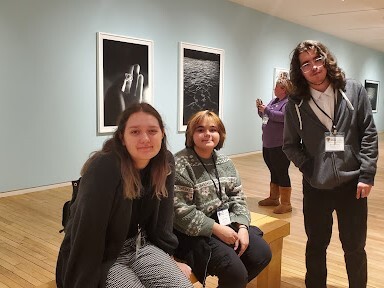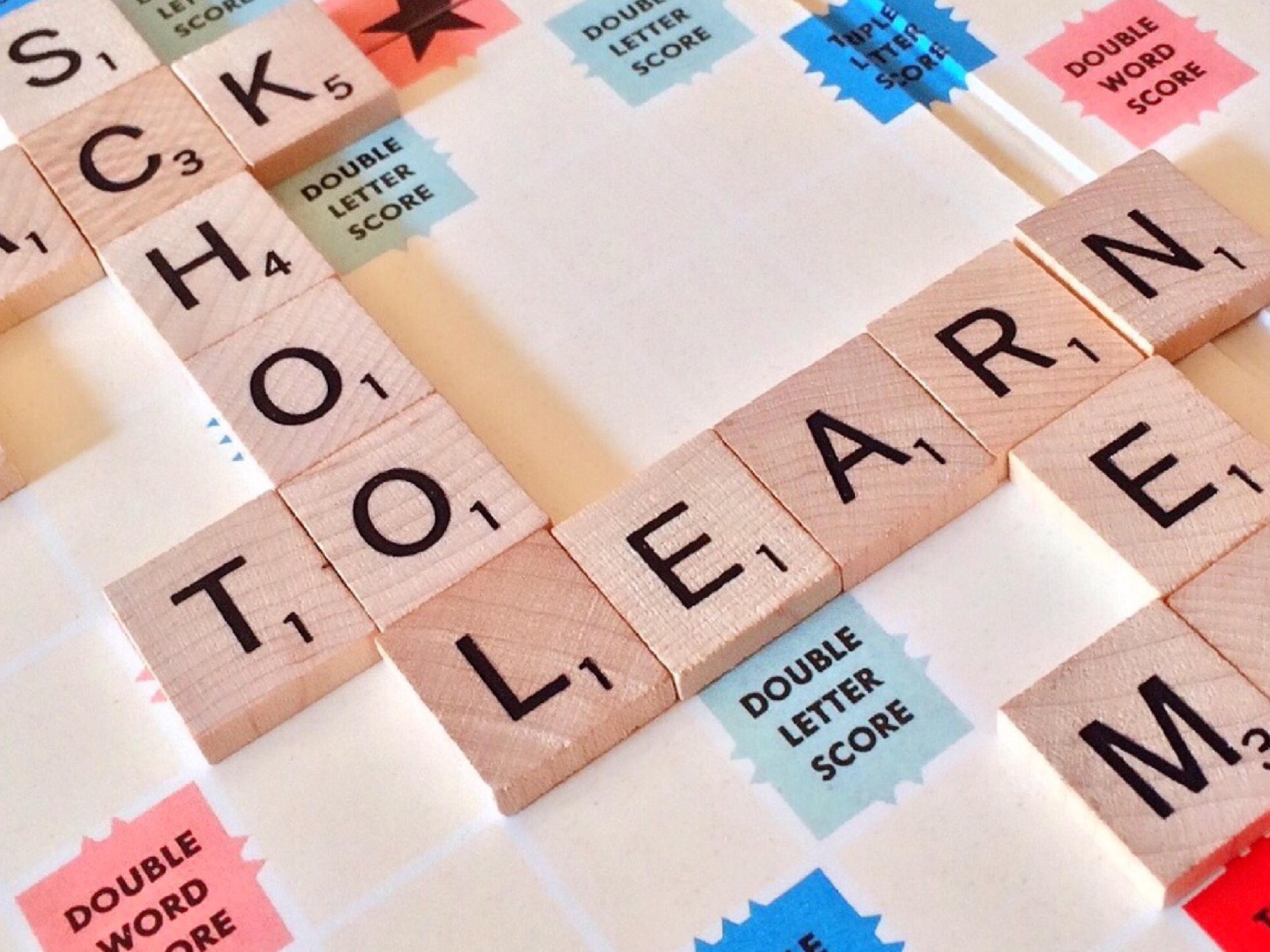Reimagining Assessment
Assessing Deeper Learning in CoMPASS-Physics
Topics
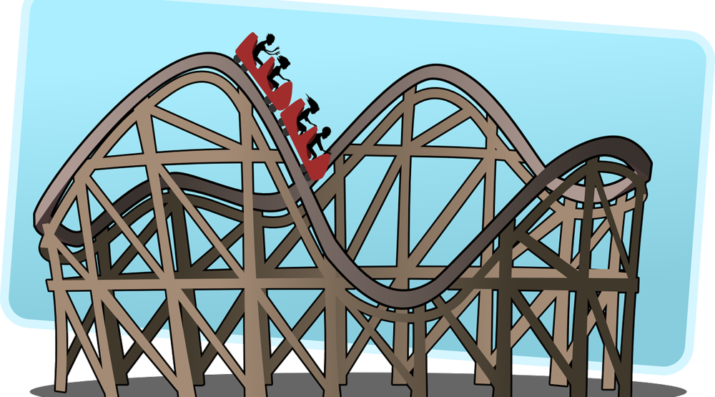
Educators are rethinking the purposes, forms, and nature of assessment. Beyond testing mastery of traditional content knowledge—an essential task, but not nearly sufficient—educators are designing assessment for learning as an integral part of the learning process.
Through CoMPASS, students are showing deep understanding of core physical science concepts and demonstrating use of science reading and writing literacy skills.
Assessing deeper learning is the proclaimed overarching goal guiding the development of the new assessments to measure the Common Core State Standards in English language arts and mathematics, according to a July 2011 Alliance for Excellent Education Policy Brief. Two consortia of states are developing new assessments which are scheduled to be in place nationwide by 2014-15 to assess deeper learning. Specifically, these new assessments are to measure how well students can demonstrate deep understanding of core content, how well they use their knowledge to solve problems, whether they are able to communicate in a range of media, and how skilled they are at collaborating with their peers.
Educators know that while new national assessment of deeper learning is critically important, it is not enough. Students also need instruction that fosters deeper learning, and teachers need instruction and curriculum resources, as well as professional development and supportive policies that facilitate their work rather than restrict it.
A common and frequent question asked by teachers and curriculum directors is: “Are there current instructional materials that foster deeper learning and provide instructional and assessment tools for teachers?” In an Education Week webinar on the common standards last summer, the question most frequently asked by the 1,600 participants was where to find instructional resources for the new standards, which cover K-12 English language arts and mathematics and have been adopted by all but four states. This blog post focuses on an exemplar set of such materials for middle school physical science: CoMPASS-Physics, which is currently being utilized by over 800 inner city metropolitan students in Wisconsin as well as 400 other students in smaller southern Wisconsin classrooms.
The development and implementation of CoMPASS-Physics was made possible through funding by the Next Generation Learning Challenges Wave II grant program in 2011-2012. The project Enhancing Literacy in Science through Digital Text, Simulations, and Design Challenges, is directed by Dr. Sadhana Puntambekar, Professor in Educational Psychology at the University of Wisconsin Madison. Previous National Science Foundation and U.S. Department of Education (IES) grants led by Dr. Puntambekar provided for the development and testing of elements found in the current project, such as computer simulations and a computer hypertext system.
The participating districts’ administrators were particularly interested in implementing CoMPASS because students are expected to gain deeper understanding of core physical science concepts—work, force, energy, and motion; and demonstrate reading and writing science literacy skills—such as writing to argue using evidence from data collected in computer simulation. Districts understand that these latter skills are in the Common Core Grades 6-8 Reading and Writing Standards for Literacy in Science and Technical Subjects. Teachers were interested in having an innovative way of teaching the physical science concepts—a way that included roller coaster simulations and hands-on models too—all of which they expected students would enjoy and greatly benefit from. CoMPASS worked to only focus on the core physical science concepts in the new science standards called the Next Generation Science Standards.
Roller Coaster Design Challenge and Deeper Learning
CoMPASS materials begin by introducing students to a design challenge called the Roller Coaster Challenge (Figure 1). It frames the learning activities that follow in the 12-16 week unit. Teachers are provided with professional development and a teacher edition of the student materials that coaches them how to initially present the design challenge to students, and then how to continuously and systematically use it as a reference point throughout the unit. (Design-based learning is the research expertise of the project director, Dr. Sadhana Puntambekar.)
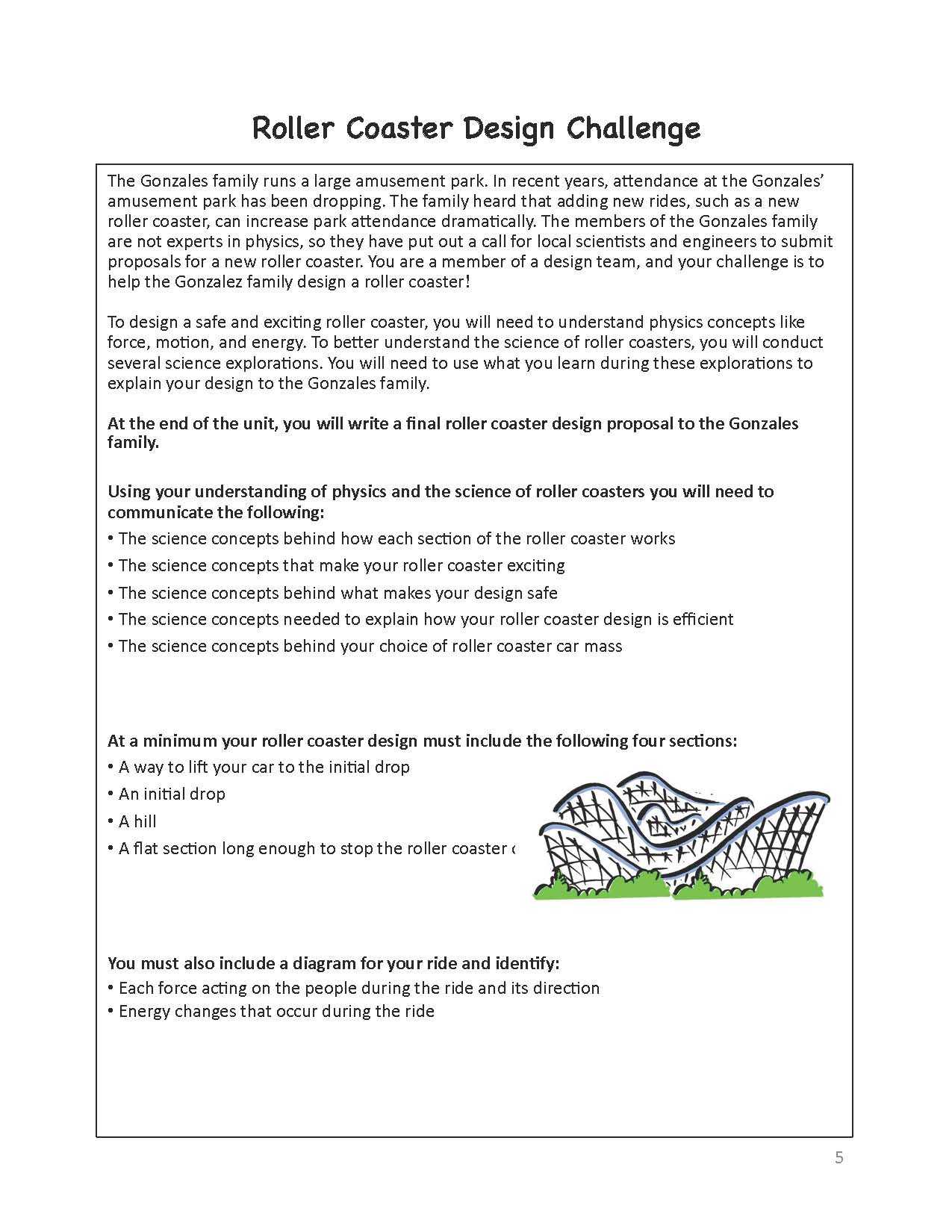
Figure 1
In design-based learning students are presented with the final assignment first—what they will be asked to do at the end of the unit. They are provided time to read about the design challenge and talk about it with the teacher and class. In CoMPASS, students read that the Gonzales family who runs a large amusement park has called in local scientists and engineers to submit proposals for a new roller coaster. Students operate in “teams” to design a safe, exciting, and efficient roller coaster that is grounded in the physics and science of roller coasters that they learn about by conducting several science explorations mainly using computer simulations. Students learn that at a minimum their design must include four sections, and in their proposal they must use the science concepts behind how each section works, as well as the science concepts related to making a ride exciting, safe, and efficient.
After providing time for students to discuss the challenge, teachers are instructed to show them the required format of their team’s final design proposal. Students learn that engineers use proofs to give detailed information about different parts of their design. So students too, in their teams, submit proofs (Figure 2). They are given specific instructions on how to label each proof—showing the dimensions of their ride (height, length, shape of each section) and the potential, kinetic, and heat energy where applicable marked with a black dot. Students must also use data from all of their simulation experiments about the forces acting on the roller coaster car at each point where a block is drawn. The notes should provide both ideas and data related to how their design for that section of the roller coaster is fun and safe, as well as efficient if applicable.
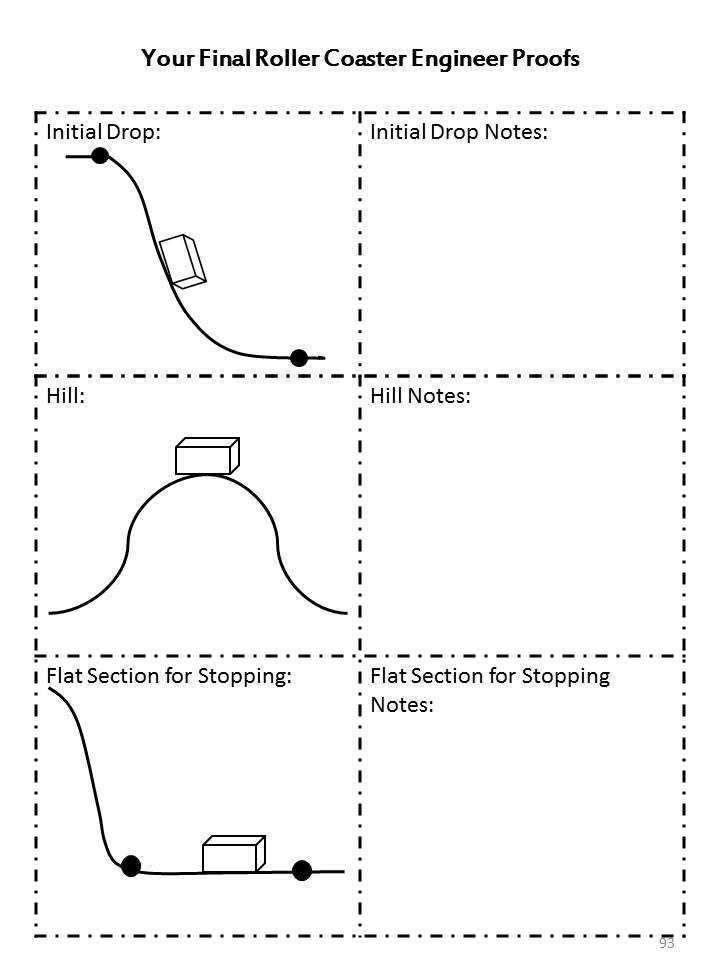
Figure 2
For example, in writing an engineering proof for the Car Lift each team is expected to at least label the mass of the car in kilograms (kg) and the lift height in meters (m). In the Car Lift Notes they can write and draw vectors showing the Potential Energy (PE in Joules) of the car at the black dot at the top of the lift, as well as draw and label vectors indicating the Applied Force (Newton) on the car mass (box). In the notes students can write that their simulation experiments showed that the greater the mass, the greater the force, work and PE; and that PE is related to the KE needed later in their design to get over the hill section.
Teams can draw in friction like bumps or marks on the track, and in the notes write about the inverse relationship between the level of friction and efficiency as measured in percentages; that is, the greater the friction, the less the efficiency percentage. They can write notes about PE not being affected by friction, and height and car mass not being related to friction. Students learn that they are expected to use precise, domain-specific vocabulary to explain their ideas, to identify variables and write about them using the correct units of measurement. In the teacher professional development and in the teacher edition, teachers are helped to understand how completing these four engineering proofs is one means of assessing deeper learning of the writing standard for science literacy, at the grades 6-8 level.
Students also are shown the written design proposal letter that each team must write explaining how each section of their roller coaster design is fun, safe and efficient (if applicable). Of primary importance is that they must use data and relevant ideas from any of their research to explain their design choices. The must include the science concepts that they learned throughout their various experiments and reading explorations.
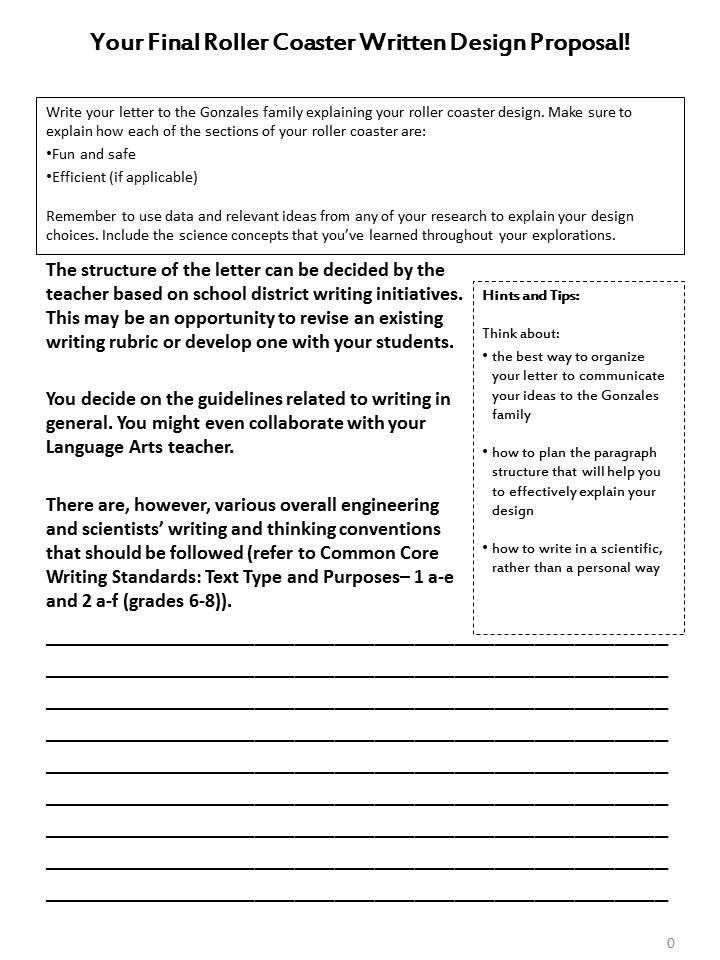
Figure 3
In the teacher edition page shown in Figure 3, as well as in the professional development, teachers are reminded that they can integrate any specific writing guidelines or initiatives of their district with this final writing assignment. To help teachers assess students’ deeper learning, a draft rubric is provided on three science writing literacy skills: (1) writing to argue, (2) using precise and domain-specific vocabulary to explain ideas, design, or argument; and (3) establish and maintain a formal style and objective tone (non-personal).
During the CoMPASS activities, students, working in teams, systematically practice these same science literacy skills. Teachers are provided embedded assessment rubrics to systematically and continuously assess students’ progress in using these skills. In the teacher professional development, teachers practice identifying examples of students’ work in the car lift and initial drop sections that illustrate strong answers, acceptable answers, and shaky or rocky answers. Teachers practice giving the kinds of feedback each kind of answer needs to deepen understanding, develop understanding, or focus attention on what concepts are to be understood.
In summary then, CoMPASS asks students who are working in teams to demonstrate deep understanding of core physics content, and it assesses how well they can use their knowledge of these physics concepts to design a roller coaster that meets criteria for safety, fun and efficiency. CoMPASS also asks students to communicate their design proposal (problem solution) in writing and in engineering design proofs. Most work is accomplished collaboratively with their peers. Teachers are provided instructional materials and professional development to foster these deeper understandings. The districts currently implementing CoMPASS, as well as new districts, are currently collaborating in the beta testing of an e-textbook version of CoMPASS that runs on tablets.
To learn more about CoMPASS, visit the project’s webpage and its grantee page.


